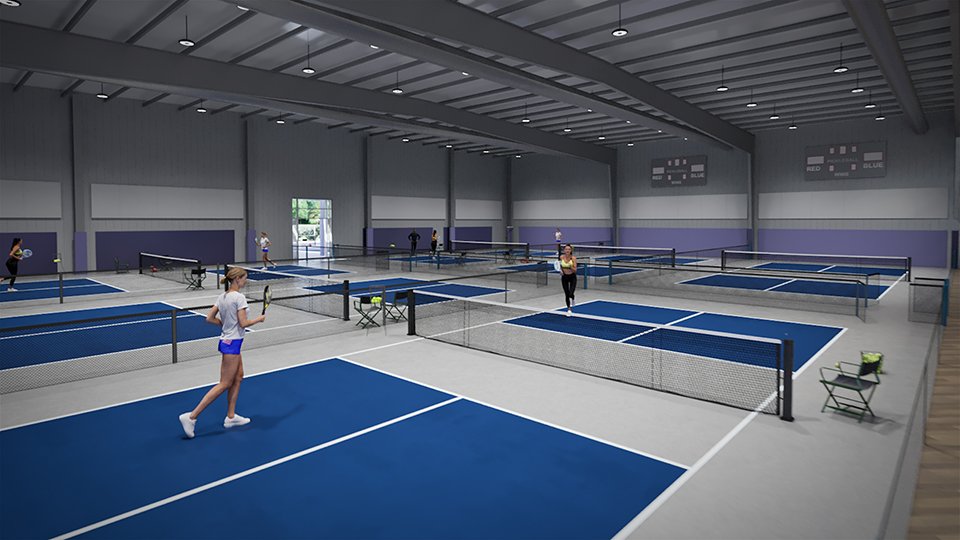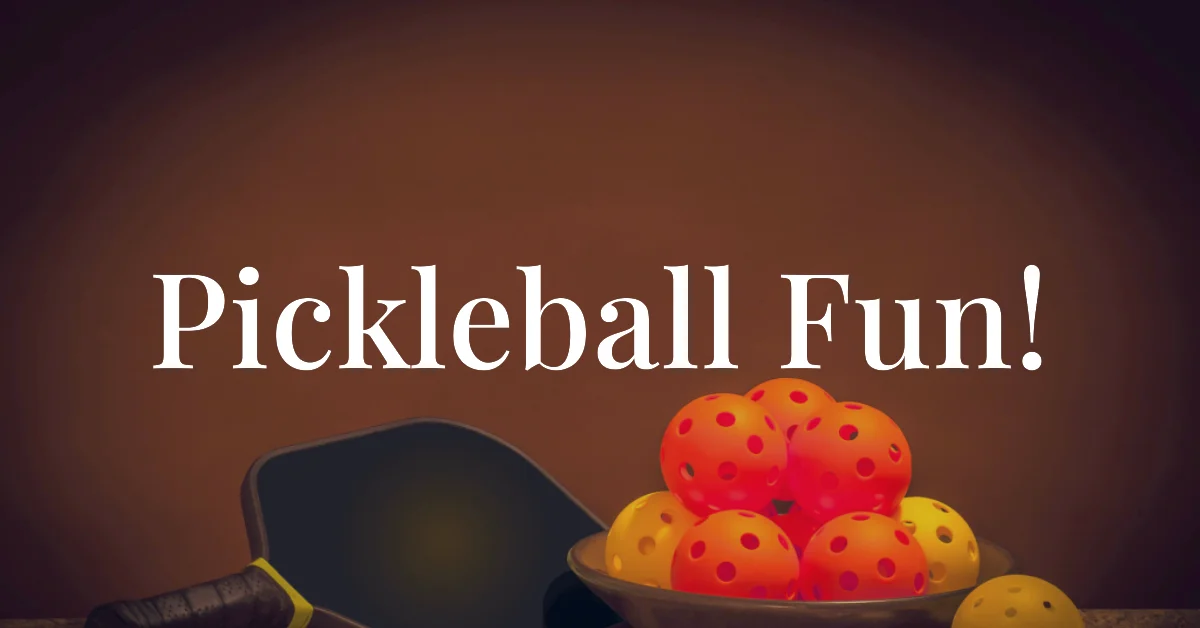What is difference between indoor and outdoor pickleballs
Pickleball has gained tremendous popularity in recent years, becoming a favorite sport for people of all ages. Whether you play indoors or outdoors, choosing the right pickleballs can greatly impact your game. Understanding the difference between indoor and outdoor pickleballs is essential for pickleball enthusiasts to optimize their playing experience. In this article, we will explore the characteristics, features, and key differences between indoor and outdoor pickleballs, helping you make an informed decision when selecting the right equipment.

Here is a table that summarizes the differences between indoor and outdoor pickleballs:
| Feature | Indoor Pickleball | Outdoor Pickleball |
|---|---|---|
| Number of holes | 26 | 40 |
| Hole diameter | Wider | Narrower |
| Weight | Lighter | Heavier |
| Hardness | Softer | Harder |
| Bounce | Less bouncy | More bouncy |
| Durability | More durable | Less durable |
| Control | Easier to control | More difficult to control |
| Speed | Slower | Faster |
| Wind resistance | Less resistant to wind | More resistant to wind |
| Comfort | More comfortable to hit with | Less comfortable to hit with |
| Price | Typically more expensive | Typically less expensive |
Understanding Pickleball
It is important to have a basic understanding of the sport. Pickleball is a paddle sport that combines elements of tennis, badminton, and table tennis. It is played with a perforated plastic ball, similar to a wiffle ball, and paddles that resemble oversized ping pong paddles. The objective of the game is to hit the ball over the net and into the opponent’s court, scoring points when they fail to return it successfully.
Indoor Pickleballs

Indoor pickleballs are specifically designed for use in indoor pickleball courts. These balls are made of softer plastic compared to their outdoor counterparts. They often have larger holes and are generally lighter in weight. Indoor pickleballs are designed to have a consistent bounce and provide better control for players in indoor settings.
One popular brand of indoor pickleballs is the Onix Fuse Indoor Balls, which are approved by the USA Pickleball Association (USAPA). These balls have smaller holes, making them ideal for indoor play. They offer good flight stability and are easier to control during rallies. Since indoor courts typically have a controlled environment with minimal wind interference, indoor pickleballs are designed to adapt to these conditions.
Key features
- Softer and lighter material
- Larger holes for better airflow
- Optimized for indoor play
- Less susceptible to wind effects
- Approved by the USAPA
Outdoor Pickleballs

Outdoor pickleballs are specifically designed for play on outdoor courts, where factors like wind and surface interaction come into play. These balls have a more durable construction to withstand the rougher outdoor surfaces and provide a more consistent bounce. Outdoor pickleballs have larger and fewer holes compared to indoor pickleballs, allowing them to withstand the impact of outdoor play.
Jugs Indoor Pickleball and Yellow Pickleball are some popular brands known for their outdoor pickleball balls. These balls have 40 holes, providing better wind resistance and stability during outdoor play. The extra durability of outdoor pickleballs allows them to last longer and perform well on different outdoor surfaces.
Key features
- Harder material for increased durability
- Smaller holes for enhanced wind resistance
- Designed for varying weather conditions
- Approval by the USAPA
Key Differences between Indoor and Outdoor Pickleballs

- Bounce Characteristics: Indoor pickleballs are typically softer and have a lower bounce compared to outdoor pickleballs. The softer plastic used in indoor balls tends to absorb more energy upon impact, resulting in a shorter and more controlled bounce. Outdoor pickleballs, on the other hand, have a harder construction, leading to a higher and livelier bounce.
- Number of Holes: Indoor pickleballs have around 26 holes, while outdoor pickleballs have 40 holes. The smaller holes in indoor balls help reduce the impact of wind interference during indoor play, while the larger holes in outdoor balls provide better wind resistance and stability in outdoor environments.
- Material and Construction: Pickleballs are made of plastic, but the specific materials and construction methods may vary. Outdoor pickleballs are typically harder than indoor balls to withstand the rougher surfaces and environmental conditions. Indoor balls, being softer, offer better control and allow for precise shots.
- Surface Interaction: Indoor pickleballs are designed for use on smooth indoor courts, which have a different texture compared to outdoor courts. The material and construction of indoor balls provide better grip and control on indoor surfaces. Outdoor pickleballs, on the other hand, are designed to perform well on various outdoor surfaces, including concrete, asphalt, or even grass.
- Wind Resistance: Wind can significantly affect the flight of the ball during outdoor play. Outdoor pickleballs are specifically designed to offer better wind resistance, allowing for more consistent and stable flight paths. The larger holes in outdoor balls reduce the impact of wind, making them more suitable for outdoor play.
- Sound Factors: Another noticeable difference is the sound they produce when hit. Due to their softer construction, indoor pickleballs tend to create a quieter sound upon impact. Outdoor pickleballs, being harder, produce a distinct “pop” sound that is often associated with the sport.
- Size: Indoor pickleballs are slightly larger than outdoor pickleballs. This is because indoor courts are typically smaller than outdoor courts, so the larger ball helps to keep the game moving.
- Weight: Indoor pickleballs are also slightly lighter than outdoor pickleballs. This is because the lighter ball is easier to control in a smaller space.
- Color: Indoor pickleballs are typically bright yellow or green. This is so that they are easy to see on indoor courts.
Indoor vs outdoor pickleball ball
Here is a table summarizing the key differences between indoor and outdoor pickleball balls:
| Feature | Indoor Pickleball Ball | Outdoor Pickleball Ball |
|---|---|---|
| Material | Softer plastic | Harder plastic |
| Weight | Lighter | Heavier |
| Bounce | Lower | Higher |
| Weight | 2.6 ounces | 2.7 ounces |
| Hole diameter | 0.125 inches | 0.110 inches |
| Speed | Slower | Faster |
| Durability | More durable | Less durable |
| Holes | 26 | 40 |
| Hole diameter | Wider | Narrower |
| Color | Yellow | Yellow, green, or orange |
| Use | Indoors | Outdoors |

Impact on Gameplay Strategies and Techniques
The choice between indoor and outdoor pickleballs can significantly impact your gameplay strategies and techniques. Indoor pickleballs, with their softer construction and lower bounce, require players to focus more on control, placement, and precision shots. On the other hand, outdoor pickleballs, with their livelier bounce, allow for more aggressive shots and require players to adapt to the wind and surface conditions.
Choosing the Right Pickleball: Playing Surface and Environment Impact
Selecting the right pickleball is essential for an optimal playing experience. Using an indoor ball outside or an outdoor ball indoors can negatively affect the game’s overall experience. The primary reason for this is the difference in the ball’s reaction to playing surfaces and environmental conditions:
- Indoor courts often have smoother surfaces, allowing the softer indoor pickleball to bounce more predictably. Indoor balls are also lighter, which mitigates the effects of air currents typically found indoors.
- Outdoor courts are more susceptible to wind and other weather elements, making the harder outdoor pickleballs better suited for these conditions. Outdoor balls also have a higher durability due to their harder material.
FAQs about indoor vs outdoor
- What is the main difference between indoor vs outdoor pickleballs?
- The main differences lie in their bounce characteristics, number of holes, material and construction, surface interaction, wind resistance, and sound factors.
- Can indoor pickleballs be used outdoors, and vice versa? While it is possible to use indoor pickleballs outdoors and vice versa, it is generally recommended to use the appropriate balls designed for each playing environment.
- How do indoor and outdoor pickleballs differ in terms of performance? Indoor pickleballs offer better control and a softer bounce, while outdoor pickleballs provide more durability, better wind resistance, and a livelier bounce.
- Are there any specific techniques or strategies for playing with indoor or outdoor pickleballs? Players should adapt their techniques and strategies based on the specific characteristics of indoor or outdoor pickleballs, considering factors such as bounce, wind resistance, and surface interaction.
- Can I use the same paddle for both pickleballs? Yes, you can use the same paddle for both pickleballs since the ball’s characteristics have a more significant impact on gameplay.
- What are some recommended pickleball brands for both indoor and outdoor play? Some recommended brands for indoor play include Onix Fuse Indoor Balls and Jugs Indoor Pickleball, while Yellow Pickleball is a popular brand for outdoor play.
Conclusion
Understanding the difference between indoor vs outdoor pickleballs is crucial for any pickleball player aiming to enhance their gameplay experience. The unique characteristics and features of indoor and outdoor pickleballs significantly impact ball performance, bounce, wind resistance, and overall control. By selecting the right pickleballs for the specific playing environment, players can optimize their skills and enjoy the game to the fullest. So, whether you prefer playing indoors or outdoors, choose your pickleballs wisely and get ready to unleash your pickleball prowess!
Refence links





